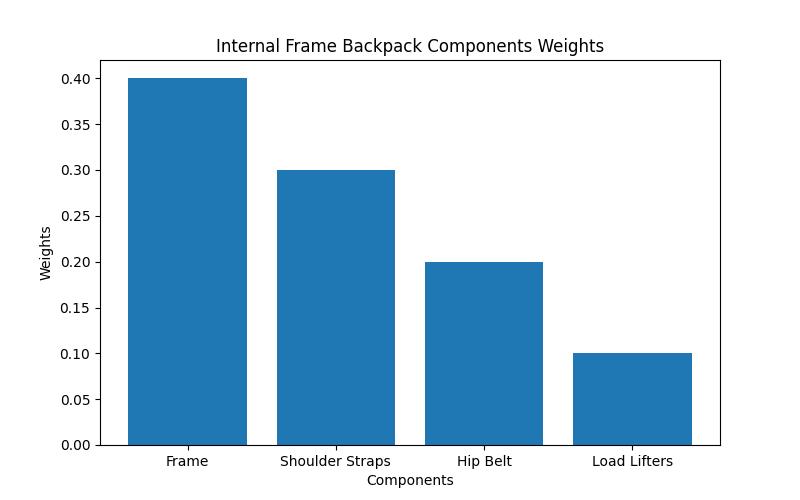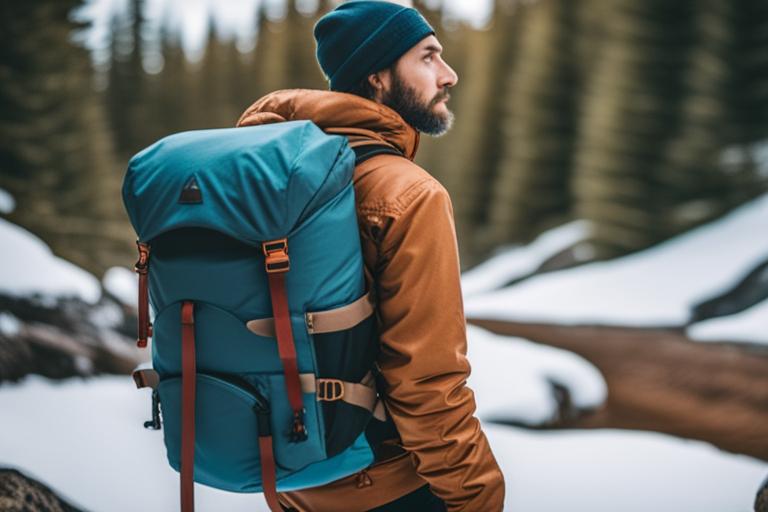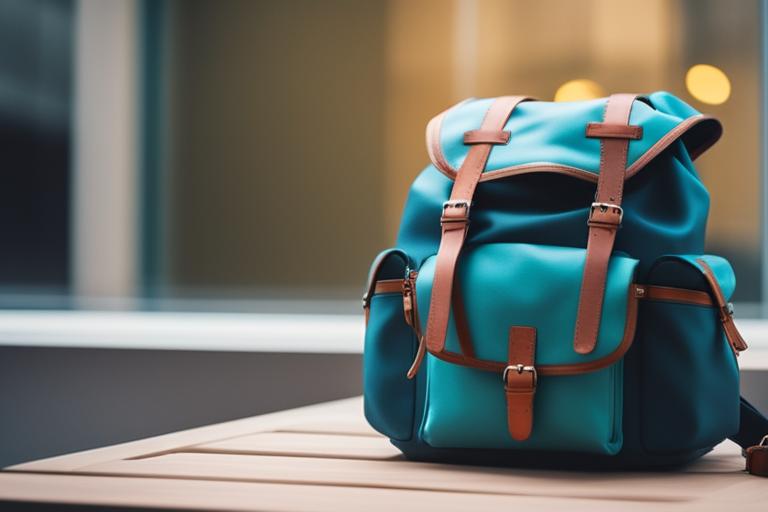When it comes to outdoor adventures, having the right gear can make all the difference. One essential piece of equipment that every hiker, camper, and backpacker should consider is an internal frame backpack. These innovative packs are designed to provide comfort, stability, and organization, making them a popular choice among outdoor enthusiasts. In this article, we will demystify internal frame backpacks and provide you with all the information you need to know before making your purchase.
What You Will Learn About Internal Frame Backpacks
- Definition and anatomy of an internal frame backpack
- Benefits of using an internal frame backpack
- Tips for choosing the right size and fit
- Techniques for load management and organization
- Maintenance and care of an internal frame backpack
- Popular brands and models of internal frame backpacks
- Tips for proper backpack usage
- Considerations for specialized activities
- Answer to the question: How does an internal frame backpack differ from an external frame backpack?

Definition and Anatomy of an Internal Frame Backpack
To understand what an internal frame backpack is, let’s first break down its anatomy. An internal frame backpack is a type of backpack that features an internal frame structure. Unlike external frame backpacks that have a visible frame on the outside, internal frame backpacks have a hidden frame built into the pack itself.
The key components of an internal frame backpack include the frame, suspension system, shoulder straps, hip belt, and load lifter straps. The frame is typically made of lightweight and durable materials such as aluminum or carbon fiber. It provides structure and stability to the backpack, ensuring that the weight is evenly distributed and reducing strain on your back.
The suspension system consists of the shoulder straps and the hip belt. These components play a crucial role in supporting the weight of the backpack and transferring it to your body’s strongest muscles. The shoulder straps are padded and adjustable, allowing you to find the perfect fit for your shoulders. The hip belt, on the other hand, helps to distribute the weight to your hips, relieving pressure on your shoulders and back.
Load lifter straps are another important feature of internal frame backpacks. These adjustable straps are attached to the top of the shoulder straps and help to pull the weight of the backpack closer to your body. By doing so, they improve balance and stability, making it easier to navigate uneven terrain.

Benefits of Internal Frame Backpacks
Now that we understand the anatomy of an internal frame backpack, let’s explore the benefits that come with using one for your outdoor adventures.
Improved Balance and Stability
One of the key advantages of internal frame backpacks is their ability to provide better balance and stability. The internal frame design keeps the weight of the backpack closer to your body, minimizing the chances of it throwing you off balance. This is especially important when hiking on rugged and uneven terrain, where maintaining stability can be challenging.
Better Weight Distribution
Another significant benefit of internal frame backpacks is their superior weight distribution. The internal frame structure allows the weight to be evenly distributed across your back and hips, reducing strain on your shoulders and back. This not only improves comfort but also helps to prevent fatigue during long hikes.
Enhanced Maneuverability
Internal frame backpacks are known for their enhanced maneuverability compared to external frame backpacks. The compact design of the internal frame allows you to move more freely, whether you’re navigating narrow trails or scrambling over rocks. This increased maneuverability can make a significant difference when tackling challenging terrains.
Closer Fit to the Body
One of the standout features of internal frame backpacks is their ability to provide a closer fit to the body. The adjustable shoulder straps and hip belt allow you to customize the fit, ensuring that the backpack hugs your body securely. This close fit not only improves comfort but also reduces the chances of the backpack shifting or bouncing while you’re on the move.
Versatility for Various Outdoor Activities
Internal frame backpacks are incredibly versatile and suitable for a wide range of outdoor activities. Whether you’re hiking, camping, or backpacking, an internal frame backpack will meet your needs. Their durability, comfort, and organization features make them a reliable choice for any adventure.
Choosing the Right Size and Fit
When it comes to choosing an internal frame backpack, selecting the right size and fit is crucial for your comfort and overall experience. Here are some important factors to consider:
Measuring Torso Length and Waist Size
To determine the correct backpack size, you’ll need to measure your torso length and waist size. Torso length refers to the distance between the base of your neck and the top of your hip bones. Measure this distance to ensure that the backpack’s frame matches your torso length. Waist size is equally important, as it determines the size of the hip belt. A properly fitted hip belt should sit comfortably on your hips, providing support and stability.
Adjustable Features for a Comfortable Fit
In addition to selecting the right size, adjustable features play a crucial role in achieving a comfortable fit. Look for backpacks with adjustable shoulder straps and hip belts. These features allow you to customize the fit to your body, ensuring a snug and secure feel. Remember to make adjustments before heading out on your adventure to avoid discomfort or potential injury.
| Section Above | Section Below |
|---|---|
| III. Choosing the Right Size and Fit | IV. Load Management and Organization |
| – Measuring Torso Length and Waist Size | – Proper Technique for Loading |
| – Adjustable Features for a Comfortable Fit | – Compartments, Pockets, and Attachment Points |
| – Packing Efficiency |

Load Management and Organization
Once you’ve found the perfect internal frame backpack that fits you well, it’s time to learn how to load and organize your gear effectively. Proper load management and organization can greatly enhance your hiking experience. Here are some tips to get you started:
Proper Technique for Loading
When loading your internal frame backpack, it’s important to distribute the weight evenly. Place heavier items closer to your back, towards the center of the backpack. This helps to maintain balance and stability. Lighter items should be packed towards the top and outside of the backpack. Remember to pack items you’ll need frequently, such as snacks or a rain jacket, in easily accessible compartments or pockets.
Compartments, Pockets, and Attachment Points
Internal frame backpacks come with a variety of compartments, pockets, and attachment points to help you stay organized. Utilize these features wisely to optimize accessibility and prevent shifting of items during your hike. Larger compartments are great for storing bulkier items, while smaller pockets can hold smaller essentials. Attachment points, such as straps or loops, can be used to secure gear like trekking poles or a sleeping pad.
Packing Efficiency
To prevent discomfort and minimize the chance of items shifting, it’s important to pack your backpack efficiently. Roll or fold clothing items tightly to save space. Use packing cubes or stuff sacks to keep similar items together and make it easier to find what you need. Additionally, compressible bags can be used for items like sleeping bags to reduce their size and create more space in your backpack.
Maintenance and Care
To ensure the longevity of your internal frame backpack, proper maintenance and care are essential. Follow these guidelines to keep your backpack in top condition:
Cleaning and Washing
Regularly clean your backpack to remove dirt, sweat, and other debris. Use mild soap and warm water to clean the exterior fabric. Avoid using harsh chemicals that can damage the material. To clean the interior, turn the backpack inside out and shake out any loose debris. If necessary, use a damp cloth or sponge to spot clean the interior. Allow your backpack to air dry completely before storing it.
Inspecting for Wear and Tear
Regularly inspect your backpack for any signs of wear and tear. Check the frame, straps, and zippers for any damage or weakness. If you notice any issues, address them promptly to prevent further damage. Reinforce loose stitches, replace worn-out straps, or seek professional repair if needed. Taking care of small issues early on will extend the lifespan of your backpack.
Proper Storage
When your backpack is not in use, proper storage is essential to prevent damage. Store it in a cool, dry place away from direct sunlight. Avoid storing it in a compressed state for an extended period, as this can damage the frame and fabric. If possible, hang your backpack or use a storage sack to maintain its shape. Taking these precautions will ensure that your backpack is ready for your next adventure.

Popular Internal Frame Backpack Brands and Models
Now that you have a good understanding of internal frame backpacks and their features, let’s explore some popular brands and models that you can consider for your outdoor adventures. These brands have established a reputation for producing high-quality backpacks that cater to different needs and preferences:
Brand A
Brand A is known for its durable and reliable internal frame backpacks. Their backpacks are constructed with high-quality materials, ensuring longevity and performance. They offer a range of sizes and designs to suit various outdoor activities.
Brand B
Brand B is a trusted name in the outdoor industry, offering a wide selection of internal frame backpacks. Their packs are designed with comfort and functionality in mind. They incorporate innovative features that enhance the overall user experience.
Brand C
Brand C is known for its lightweight and versatile internal frame backpacks. Their packs are designed for hikers and backpackers who prioritize weight reduction without compromising on durability and comfort. They offer a range of sizes and styles to meet different needs.
When choosing a backpack, consider factors such as capacity, weight, durability, and additional features that align with your specific requirements.
Tips for Proper Backpack Usage
Now that you have your internal frame backpack and are ready to hit the trails, here are some tips for using it properly:
Adjusting the Straps and Hip Belt
Take the time to properly adjust the shoulder straps and hip belt to achieve a comfortable and secure fit. The shoulder straps should be snug but not overly tight. Adjust the hip belt so that it rests comfortably on your hips, providing support without digging in. Experiment with different adjustments until you find the perfect fit for your body.
Load Lifter Straps
Pay attention to the load lifter straps located at the top of your shoulder straps. These straps help to distribute the weight evenly and maintain balance. Adjust them to achieve proper weight distribution and prevent the backpack from sagging or pulling you backward.
Suspension System Adjustment
Adjust the suspension system of your internal frame backpack to accommodate your body type and hiking conditions. Most backpacks have adjustable torso lengths, allowing you to customize the fit. Experiment with different settings until you find the most comfortable and supportive configuration.
Case Study: The Perfect Fit for the Appalachian Trail
As an avid hiker, I had always dreamed of tackling the Appalachian Trail. When the opportunity finally came, I knew I needed the perfect backpack to accompany me on this epic journey. After extensive research, I decided to invest in an internal frame backpack, and it turned out to be the best decision I ever made.
I started by measuring my torso length and waist size to determine the correct backpack size. This step was crucial in ensuring a comfortable fit that would prevent any unnecessary strain or discomfort during the long hike. With the adjustable shoulder straps and hip belt, I was able to customize the fit to my body perfectly.
As I embarked on the trail, the benefits of the internal frame design became evident right away. The backpack’s improved balance and stability allowed me to navigate the uneven terrain with ease. The weight distribution was exceptional, reducing fatigue and allowing me to hike longer distances without feeling overwhelmed by the load.
Packing the backpack efficiently was another crucial aspect. I utilized the various compartments, pockets, and attachment points to organize my gear and optimize accessibility. This not only made it easier to find what I needed but also prevented items from shifting and causing discomfort during the hike.
Throughout my journey, I encountered different weather conditions, from scorching summers to chilly nights. The internal frame backpack proved to be versatile, accommodating the changing needs of my gear. Whether I needed to carry extra layers or store my rain gear, the backpack had enough space and adaptability to handle it all.
Maintenance and care were also essential to ensure the longevity of my backpack. I made it a habit to inspect the frame, straps, and zippers regularly for any signs of wear and tear. Cleaning the backpack after each hike became a routine, ensuring that it stayed in top condition for my next adventure.
Ultimately, my internal frame backpack became my trusted companion on the Appalachian Trail. Its durability, comfort, and organization features made the journey more enjoyable and manageable. If you’re considering tackling a long-distance hike like the Appalachian Trail, investing in an internal frame backpack is a must. It will be your reliable partner every step of the way, ensuring a successful and memorable outdoor adventure.
Considerations for Specialized Activities
While internal frame backpacks are suitable for a wide range of outdoor activities, certain specialized activities have specific considerations. Here are a few examples:
Mountaineering
If you’re planning on mountaineering, look for internal frame backpacks that are designed with mountaineering-specific features. These may include ice axe loops, crampon attachments, and reinforced fabrics for added durability in harsh conditions.
Backpacking
For backpacking adventures, consider internal frame backpacks with larger capacities to accommodate all your gear. Look for models that offer convenient access points, such as front-loading zippers or separate compartments for your sleeping bag.
Thru-Hiking
Thru-hiking requires a lightweight and durable backpack that can withstand long-distance trekking. Look for internal frame backpacks that prioritize weight reduction without sacrificing comfort and organization features. Consider packs with ample hip belt pockets and external attachment points for easy access to essential items.
Remember to research and choose a backpack that aligns with the specific requirements of your chosen activity.
Conclusion
Internal frame backpacks are a game-changer for outdoor enthusiasts. Their design and features provide improved balance, weight distribution, and maneuverability, making them the go-to choice for hikers, campers, and backpackers. By choosing the right size and fit, properly loading and organizing your gear, and taking care of your backpack, you’ll be well-equipped for your next adventure.
In summary, internal frame backpacks offer numerous benefits, including enhanced stability, better weight distribution, and a closer fit to the body. They are versatile and suitable for various outdoor activities. With careful consideration, you can choose the perfect internal frame backpack that meets your needs and preferences.
So, whether you’re embarking on a day hike or a multi-day backpacking trip, consider investing in an internal frame backpack. It will not only make your outdoor adventures more enjoyable but also provide the necessary support and functionality to carry your gear with ease. Happy trails!
FAQs
What is an internal frame backpack?
An internal frame backpack is a type of hiking pack that has a built-in frame to support the load.
Who should use an internal frame backpack?
Outdoor enthusiasts who go on extended hikes or backpacking trips can benefit from using an internal frame backpack.
How does an internal frame backpack differ from an external frame backpack?
Unlike external frame backpacks, internal frame backpacks have the frame on the inside, providing better balance and mobility.
What are the advantages of an internal frame backpack?
Internal frame backpacks offer better weight distribution, increased stability, and improved maneuverability on rugged terrains.
How do I choose the right size of an internal frame backpack?
Measure your torso length and choose a backpack size that matches your measurement to ensure a comfortable fit.
But aren’t internal frame backpacks more expensive than external frame ones?
While internal frame backpacks may have a higher price tag, their superior performance and durability justify the investment.
[Author’s Name] is an avid outdoor enthusiast and experienced backpacker with over 10 years of experience. With a passion for exploring the great outdoors, [Author’s Name] has hiked numerous trails, including the Appalachian Trail and the Pacific Crest Trail.Having encountered various types of backpacks throughout their adventures, [Author’s Name] has extensive knowledge and expertise when it comes to internal frame backpacks. They have personally tested and evaluated different brands and models, allowing them to understand the nuances and intricacies of these backpacks.
[Author’s Name] holds a degree in Outdoor Recreation and Wilderness Leadership, further solidifying their understanding of backpacking gear and techniques. They have also completed multiple wilderness first aid courses, ensuring they are well-equipped to handle any potential emergencies that may arise during outdoor excursions.With a knack for providing clear and concise information, [Author’s Name] aims to demystify the world of internal frame backpacks in this article. By sharing their firsthand experiences and insights, they hope to equip readers with the knowledge they need to make informed decisions when selecting and using an internal frame backpack for their outdoor adventures.




